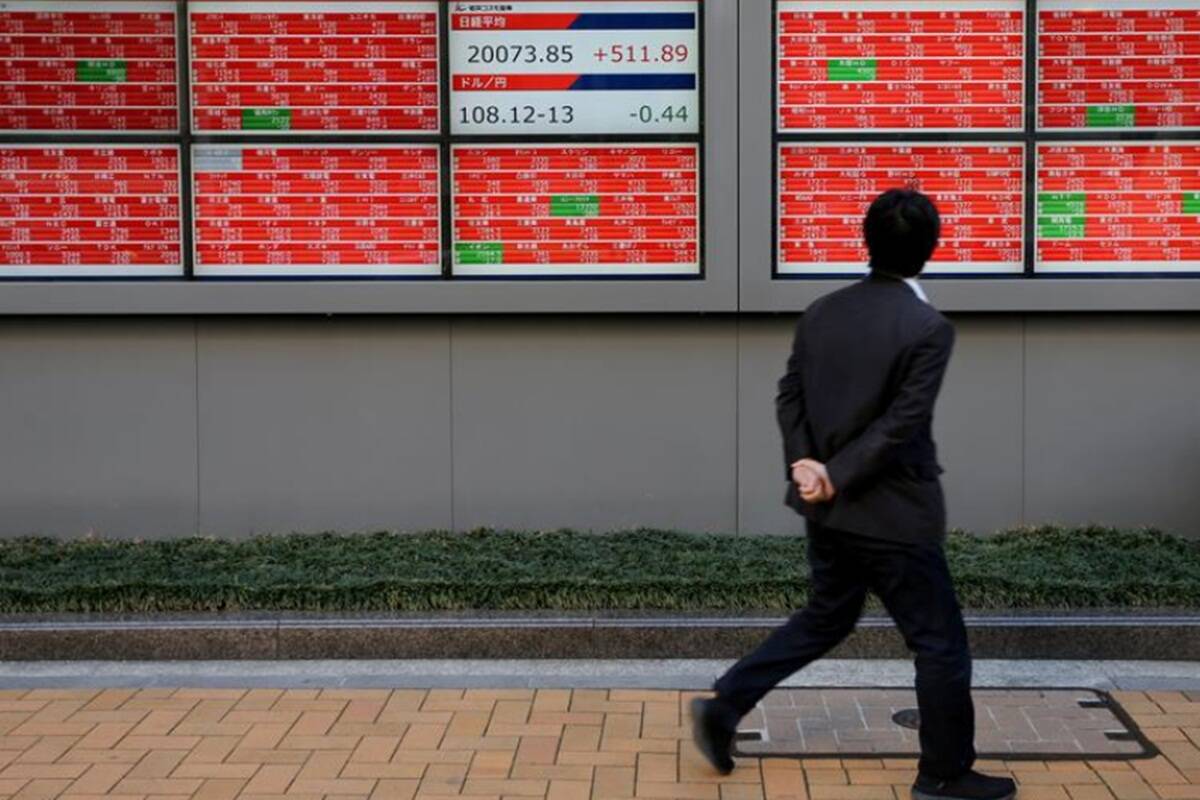Shares were mostly higher Wednesday in Asia after a worldwide rally spurred by hopes that a COVID-19 vaccine will help the global economy return to normal. Benchmarks advanced in Tokyo, Seoul and Sydney but edged lower in Hong Kong and Shanghai, where new Chinese regulations focused on technology companies prompted selling in that sector.
The proposed regulations issued Monday for public comment give guidelines on how China’s 2008 anti-monopoly law will be applied to internet companies. The announcement gave no indication operators are accused of wrongdoing but cited areas where regulators might look for problems including sharing of information and alliances or pricing services below cost to keep out new competitors.
Midday, e-commerce giant Alibaba’s shares had fallen 7.3% and Tencent, owner of the popular WeChat social media platform, had lost 5% and online retailer JD.com was down 6.2%.
In Hong Kong, the Hang Seng lost 0.2% to 26,241.52 and the Shanghai Composite index declined 0.2% to 3,356.88.
But other regional markets were mostly higher. Japan’s Nikkei 225 index gained 1.2% to 25,197.68 and the S&P/ASX 200 advanced 1.3% to 6,419.50. South Korea’s Kospi rose 0.7% to 2,470.11.
On Wall Street, stocks downshifted on Tuesday after a powerful worldwide rally the day before. It was the second straight day that rising hopes for a COVID-19 vaccine pushed investors to reorder which stocks they see winning and losing.
Treasury yields and oil held onto their big gains from a day earlier or added some more amid strengthened confidence in the economy. The S&P 500 dipped 0.1% to 3,545.53, after erasing most of an early loss. The Dow Jones Industrial Average gained 0.9% to 29,420.92 and the Nasdaq composite dropped 1.4%, to 11,553.86.
The flashpoint for all the moves was Monday’s announcement from Pfizer that a potential COVID-19 vaccine it’s developing with German partner BioNTech may be 90% effective, based on early but incomplete test results.
Stocks of smaller U.S. companies, which tend to move more with expectations for the economy than their bigger counterparts, rallied again. The Russell 2000 index of small-cap stocks gained 1.9% to 1,737.01, finally returning to where it was in January. It’s just 0.2% below its record high set in 2018.
Several areas of the market that have been beaten down through the pandemic and whose low prices make them look like potentially better values led the way. Energy stocks in the S&P 500 rose 2.5% for the best gain among the 11 sectors that make up the index, for example, though they’re still down nearly 44% for 2020.
Big Tech stocks that carried the stock market through the pandemic, meanwhile, are suddenly facing more scrutiny for their high prices. Their stocks soared through 2020 on expectations they’ll continue to thrive if the economy is in lockdown mode. But that’s left their prices looking expensive even after accounting for their huge profits.
Amazon, which is one of those Big Tech stay-at-home winners, fell 3.5%. It also is facing antitrust charges filed by European Union regulators on Tuesday that accuse it of using its access to data to gain an unfair advantage over merchants using its platform.
Microsoft fell 3.4%, and Facebook lost 2.3%. Those drops have outsized effects on the S&P 500 because they’re some of the largest companies in the index by market value. The S&P 500 is already up 8.4% in November, helped by hopes for a coronavirus vaccine and clearing uncertainty about U.S. leadership after Democrat Joe Biden clinched the last of the 270 electoral votes needed to become the next president. Republicans, meanwhile, appear likely to keep control of the Senate.
Some analysts are speaking of a Goldilocks scenario where low tax rates and other pro-business policies remain while a more stable and predictable set of policies comes out of the White House. Many risks remain, and the biggest may be whether investors have become too convinced about a potential COVID-19 vaccine.
Coronavirus counts continue to surge at worrying rates across the U.S. and Europe. prompting some governments to restore restrictions on businesses. ”The biggest downside risk remains COVID and how severe this wave is going to be,” Craig Erlam of Oanda said in a commentary. ”COVID is impossible to ignore, particularly with cases soaring once again and deaths on the rise.” With fresh help for the U.S. economy from Congress still undecided, pressure is on central banks to step up support for markets.
”In fact, the end of this year could provide the perfect cocktail of widespread monetary and fiscal easing, combined with one or more vaccines,” he said. President Donald Trump’s refusal to concede and cooperate with Biden’s transition team is another source of uncertainty, especially as some Republicans including Senate Majority Leader Mitch McConnell rally behind Trump’s efforts to fight the election results. Still, optimism remains across markets.
The yield on the 10-year Treasury rose to 0.98% from 0.95%, close to its highest level since March. Benchmark U.S. crude oil gained 33 cents to $41.69 per barrel in electronic trading on the New York Mercantile Exchange. It rose 2.7% to settle at $41.36 per barrel on Tuesday. Brent crude, the international standard, picked up 28 cents to $43.89 per barrel.
In currency dealings, the dollar weakened to 105.02 Japanese yen from 105.31 yen late Tuesday. The euro rose to $1.1825 from $1.1820.
Eqwires Research Analyst
Top-notch SEBI registered research analyst
Best SEBI registered Intraday tips provider and Best SEBI registered stock advisory company
info@eqwires.com
Call: +91 9624421555 / +91 9624461555
www.eqwires.com





